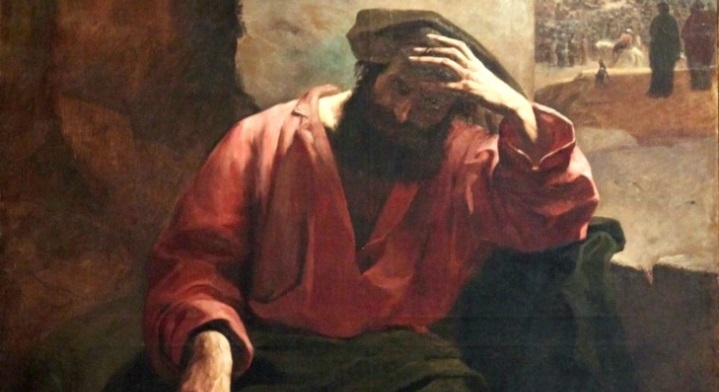Judas Iscariot was a disciple and one of the original Twelve Disciples of Jesus Christ. According to all four canonical gospels, Judas betrayed Jesus to the Sanhedrin in the Garden of Gethsemane by kissing him and addressing him as “Rabbi” to reveal his identity to the crowd who had come to arrest him. Take a look below for 30 more strange and interesting facts about Judas Iscariot.
1. His name is often used synonymously with betrayal or treason.
2. Judas’s epithet “Iscariot” most likely means he came from the village of Kerioth, but this explanation is not universally accepted and may other possibilities have been suggested.
3. The Gospel of Mark, the earliest gospel, gives no motive for Judas’s betrayal, but does present Jesus predicting it in advance at the Last Supper, an event also described in all the later gospels.
4. The Gospel of Matthew 26:15 stated that Judas committed the betrayal in exchange for thirty pieces of silver.
5. The Gospel of Luke 22:3 and the Gospel of John 13:27 suggest that he was possessed by Satan.
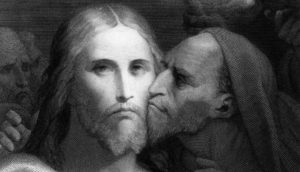
6. According to Matthew 27:1-10, after learning that Jesus was to be crucified, Judas attempted to return the money he had been paid for his betrayal to the chief priests and committed suicide by hanging.
7. The Book of Acts 1:18 quotes Peter as saying that Judas used the money to buy the Field of Blood.
8. His place among the Twelve Apostles was later filled by Matthias.
9. Despite his notorious role in the gospels, Judas remains a controversial figure in Christian history.
10. In some circles, Judas’ betrayal is seen as setting in motion the events that led to Jesus’ crucifixion and resurrection, which, according to traditional Christian theology, brought salvation to humanity.
11. The Gnostic Gospel of Judas, which is rejected by the mainstream Church as heretical, praises Judas for his role in triggering humanity’s salvation and exalts Judas as the best of the apostles.
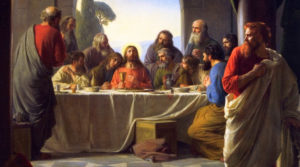
12. Sine the Middle Ages, Judas has been portrayed as a personification of the Jewish people and his betrayal has been used to justify Christian antisemitism.
13. “Judas” is the Hebrew name Judah translated into Greek. It means “praised.”
14. As treasurer, Judas seemed to be trusted by most oft he disciples.
15. John was the only one who was outspoken about Judas being a thief who was likely to take money from the bag.
16. In the paintings of the Last Supper, Judas usually either has no halo, or has a dark one, contrasting with the other disciples who are portrayed with light halos.
17. Judas is condemned to the lowest circle of Hell in Dante‘s Inferno.
18. The term “Judas” has entered many languages as a synonym for “betrayer,” and Judas has become the archetype of the traitor in Western art and literature.
19. Judas is given some role in virtually all literature telling the Passion story, and appears in many modern novels and movies.
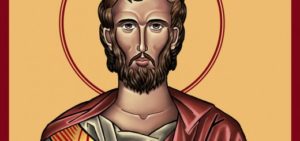
20. In the Eastern Orthodox hymns of Holy Wednesday, Judas is contrasted with the woman who anointed Jesus with expensive perfume and washed his feet with her tears.
21. Judas is often shown with red hair in Spanish cultures and by William Shakespeare.
22. He is the subject of one of the oldest surviving English ballads, which dates from the 13th century. In the ballad, the blame for the betrayal of Christ is placed on his sister.
23. In art, one of the most famous depictions of Judas and his kiss of betrayal of Jesus is “The Taking of Christ” by Italian Baroque artist, Caravaggio, done in 1602.
24. In “Memoirs of Judas,” by Ferdinando Petruccelli della Gattina, he’s seen as a leader of the Jewish revolt against the rule of Romans.
25. According to medieval copies of the Gospel of Barnabas, it was Judas, not Jesus, who was crucified on the cross.
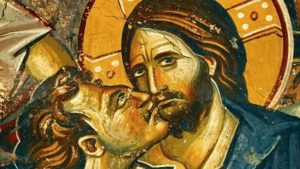
26. Irenaeus records the beliefs of one Gnostic sect, the Cainites, who believed that Judas was an instrument of the Sophia, Divine Wisdom, therefore, earning the hatred of the Demiurge.
27. It’s speculated that Judas’ damnation, which seems possible from the Gospel’s text, may not stem from his betrayal of Christ, but from the despair which caused him to commit suicide.
28. There is nothing in the gospels to associate Judas with Judeans except his name, which was an extremely common one for Jewish men during the first century.
29. In Mikhail Bulgakov’s novel “The Master and Margarita,” Judas is paid by the high priest of Judaea to testify against Jesus, who had been inciting trouble among the people of Jerusalem.
30. In some church stained glass windows, Judas is depicted with a dark halo as in one of the windows of the Church of St. John the Baptist, Yeovil.

